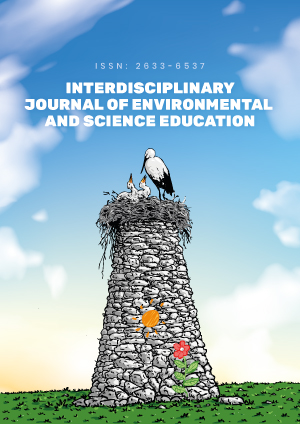Abstract
This paper studies four key aspects of the instrument “Views of Nature of Science” (VNOS); a) its general characteristics, b) the particular characteristics of the forms VNOS-A, VNOS-B, VNOS-C, VNOS-D; VNOS-D+ and VNOS-E, c) the modifications of its open-ended questions, and finally, d) the scope and limitations of the VNOS forms from the new conceptualizations of the Nature of Science (NOS) construct. The methodology is based on documentary research. The criteria of validity and reliability of Scott (1990) are followed. The open-ended questions of VNOS are analysed from four identified inductive categories: extension, reduction, substitution and fragmentation. The main contributions of the article are: 1. Delve into the characterization of VNOS, and its forms, allowing future NOS researchers to interpret the data obtained from the VNOS forms. Thus, each VNOS form identifies open-ended questions focused on various aspects of NOS (direct questions) and open questions focused on a specific context. The VNOS-C form presents more open-ended questions in a specific context and may be of greater interest for research in some populations. Explicit and implicit questions are also identified. The VNOS-D + form has more open-ended questions. Researchers are probably able to find units of analysis to characterize NOS views more easily in the VNOS-D+ form. 2. Relate the open-ended questions and NOS aspects characterize in each VNOS form. 3. Group open-ended questions by characterized NOS aspects, which is of interest for research focused on a particular NOS aspect. 4. Finally, the possibility of characterizing views on “scientific methods” is highlighted, especially when VNOS is used in conjunction with monitoring interviews, as well as with the “Views About Scientific Inquiry” (VASI) instrument. Similarly, it relates to the potential of VNOS forms to characterize some aspects coming from other NOS conceptualizations, especially from “features of science” (FOS) raised by Mathews (2012). All of the above, contributes conceptually and methodologically, to the identification of NOS views of primary and secondary students and their teachers. This is necessary to carry out diagnoses of NOS views in different communities, to propose evaluations of the impact of different teaching strategies and to relate NOS with other constructs, which together allow for the development of skills for informed socioscientific decision-making in the population in general.
Keywords
License
This is an open access article distributed under the Creative Commons Attribution License which permits unrestricted use, distribution, and reproduction in any medium, provided the original work is properly cited.
Article Type: Research Article
INTERDISCIP J ENV SCI ED, Volume 17, Issue 2, 2021, Article No: e2238
https://doi.org/10.21601/ijese/9340
Publication date: 24 Dec 2020
Article Views: 5669
Article Downloads: 6174
Open Access References How to cite this article
 Full Text (PDF)
Full Text (PDF)